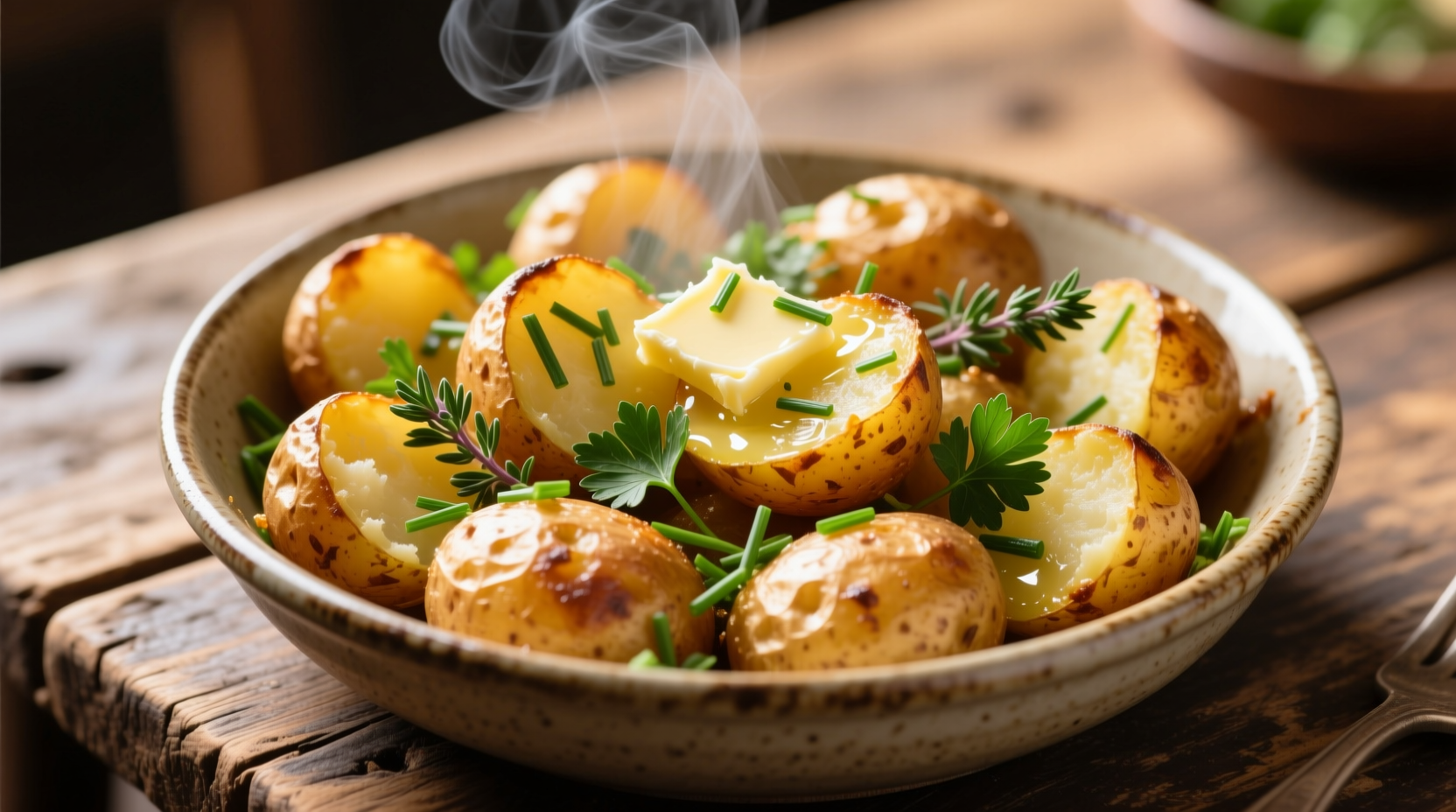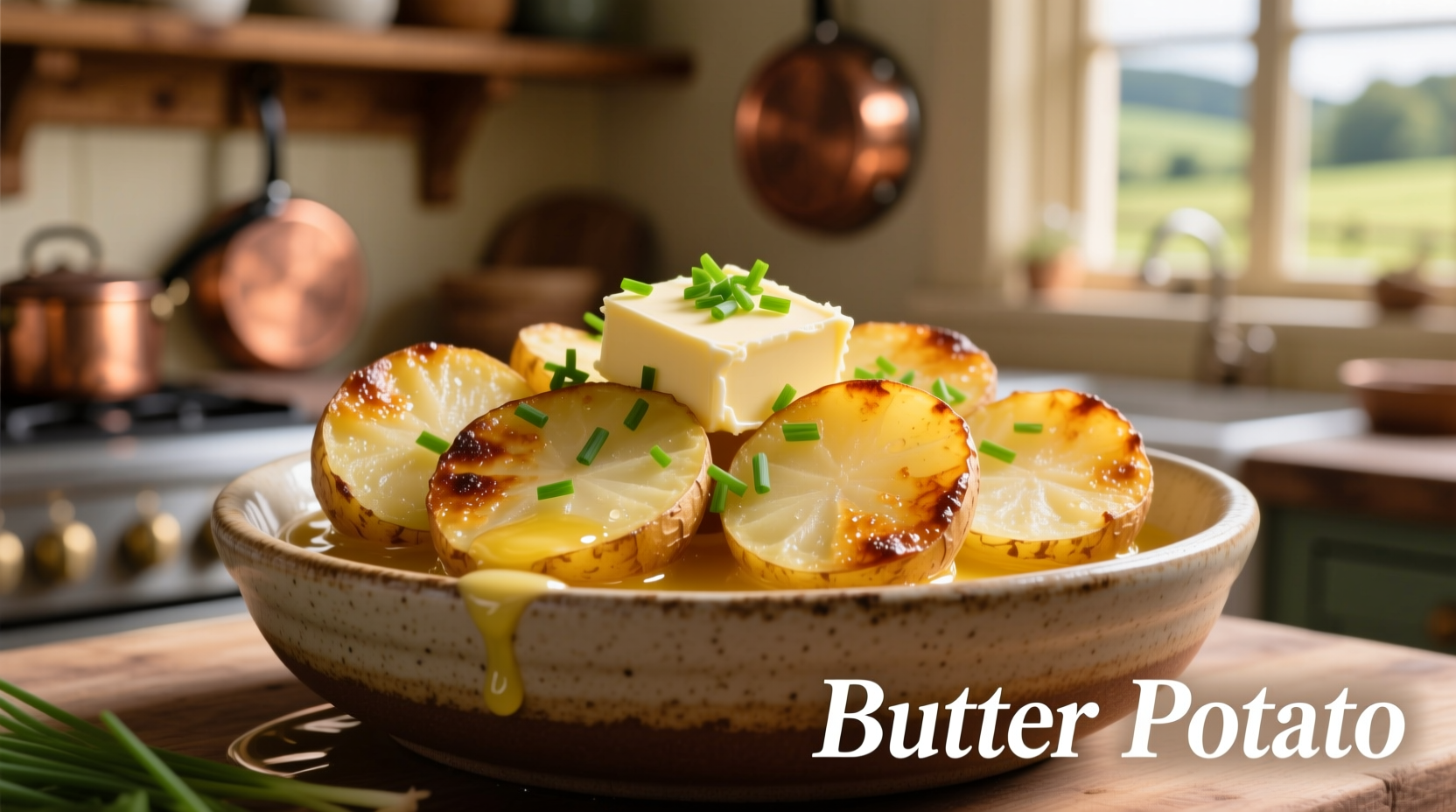When you reach for potatoes to elevate your next meal, butter potatoes should be your first choice. These golden gems deliver professional culinary results with minimal effort, transforming simple dishes into memorable meals. Whether you're preparing Sunday dinner or weeknight comfort food, understanding how to select and use butter potatoes properly makes all the difference in texture, flavor, and overall satisfaction.
What Exactly Is a Butter Potato?
Despite common misconceptions, "butter potato" isn't an official botanical classification. This term typically refers to Yukon Gold potatoes, developed in Canada during the 1960s through cross-breeding wild South American potatoes with North American varieties. The Agriculture and Agri-Food Canada research team created this cultivar specifically for its naturally buttery flavor profile and smooth texture.
Yukon Golds feature thin, smooth skin with light tan coloring and distinctive golden-yellow flesh. Their unique characteristic lies in their balanced moisture and starch content (approximately 16-18% starch), placing them in the medium-starch category. This composition creates that signature creamy texture without becoming gluey—a common problem with high-starch varieties like Russets when overworked.
| Potato Variety | Starch Content | Best Cooking Methods | Texture When Cooked |
|---|---|---|---|
| Butter (Yukon Gold) | 16-18% | Mashing, Roasting, Boiling | Creamy yet firm |
| Russet | 20-22% | Baking, Frying | Fluffy |
| Red Bliss | 14-16% | Boiling, Salads | Firm |
| Sweet Potato | 10-12% | Baking, Roasting | Moist and dense |
Why Butter Potatoes Outperform Other Varieties
The secret to butter potatoes' culinary superiority lies in their chemical composition. According to research from the University of Idaho's Potato School, Yukon Golds contain higher concentrations of sucrose and glucose compared to white potatoes. This natural sweetness enhances flavor perception while the balanced starch structure creates that luxurious mouthfeel without requiring excessive butter or cream.
Food science studies show butter potatoes maintain their structural integrity better than high-starch varieties when cooked. Their medium starch content allows them to absorb flavors beautifully while resisting disintegration—a critical factor for dishes like potato salads or gratins where presentation matters. When mashed, they achieve that perfect creamy consistency with 30% less added fat than Russets, making them both healthier and more flavorful.

Optimal Cooking Techniques for Butter Potatoes
Maximize your butter potatoes' potential with these chef-approved methods:
Mashing Perfection
For restaurant-quality mashed potatoes at home, follow this professional technique: Boil unpeeled butter potatoes in well-salted water until fork-tender (about 15-20 minutes). Drain thoroughly, then return to the warm pot over low heat for 2 minutes to evaporate excess moisture. Use a ricer or food mill for smooth results—never a blender, which releases too much starch. Warm your dairy ingredients (milk, cream, or butter) before incorporating to prevent gumminess.
Roasting for Maximum Flavor
Cut butter potatoes into 1-inch cubes, toss with olive oil, salt, and fresh herbs. Roast at 400°F (200°C) on a parchment-lined sheet pan for 35-40 minutes, flipping halfway. The golden flesh caramelizes beautifully, creating crispy edges while maintaining creamy centers. For enhanced flavor, add a sprig of rosemary to the roasting pan.
Boiling Without Waterlogging
When boiling for salads or soups, always start potatoes in cold, salted water and bring gradually to a simmer. This ensures even cooking without mushy exteriors. Cook until just tender (12-15 minutes for small potatoes), then immediately drain and cool under running water to stop the cooking process.
Seasonal Availability and Selection Tips
Butter potatoes reach peak quality from late summer through early spring. When selecting, look for firm potatoes with smooth, unblemished skin—avoid those with green spots (indicating solanine development) or soft areas. Smaller potatoes (1.5-2 inches in diameter) typically offer the most consistent texture for mashing, while larger specimens work better for roasting or gratins.
Store butter potatoes in a cool, dark place with good ventilation—never in plastic bags which trap moisture. The ideal storage temperature is 45-50°F (7-10°C). Avoid refrigeration, which converts starches to sugars and creates off-flavors. Properly stored, they'll maintain quality for 2-3 weeks.
Three Simple Butter Potato Recipes
Creamy Garlic Butter Mashed Potatoes
Boil 2 pounds of butter potatoes until tender. While cooking, simmer 4 minced garlic cloves in 1/2 cup warm milk for 5 minutes. Drain potatoes thoroughly, then mash with garlic milk, 4 tablespoons melted butter, salt, and white pepper. The natural buttery flavor means you'll need 30% less added fat than traditional recipes.
Hasselback Butter Potatoes
Slice 8 small butter potatoes horizontally (almost but not quite cutting through). Brush with olive oil, sprinkle with sea salt and thyme. Roast at 400°F for 45 minutes until golden and crispy. The thin slices fan out beautifully while the centers remain creamy.
Butter Potato and Leek Soup
Sauté 2 chopped leeks in 2 tablespoons butter until soft. Add 1.5 pounds diced butter potatoes, 4 cups vegetable broth, and 1 bay leaf. Simmer until potatoes are tender, then blend until smooth. The natural creaminess eliminates the need for heavy cream while delivering luxurious texture.
Common Misconceptions About Butter Potatoes
Many home cooks mistakenly believe butter potatoes require special preparation techniques. In reality, their advantage lies in their forgiving nature—they're less prone to becoming gluey when over-mashed and maintain better texture when reheated compared to high-starch varieties.
Another misconception is that butter potatoes are significantly higher in fat. The "butter" refers solely to flavor and texture characteristics—the fat content remains negligible (0.1g per 100g). Their golden color comes from natural carotenoids, not added fats.
When Butter Potatoes Aren't the Best Choice
While versatile, butter potatoes have limitations. For crispy French fries or baked potatoes, high-starch Russets produce superior results due to their drier texture. When making gnocchi, some chefs prefer Russets for their lighter, fluffier texture. Butter potatoes also don't hold up as well as waxy varieties in long-cooked stews where maintaining distinct shape is crucial.











 浙公网安备
33010002000092号
浙公网安备
33010002000092号 浙B2-20120091-4
浙B2-20120091-4